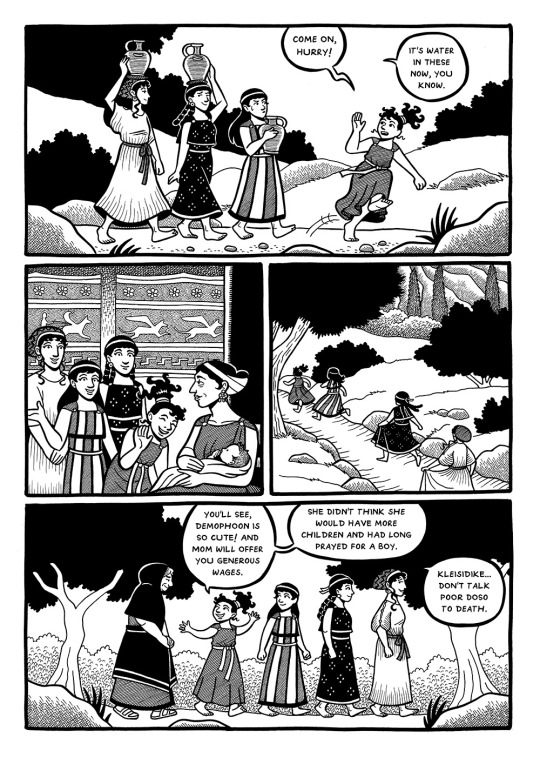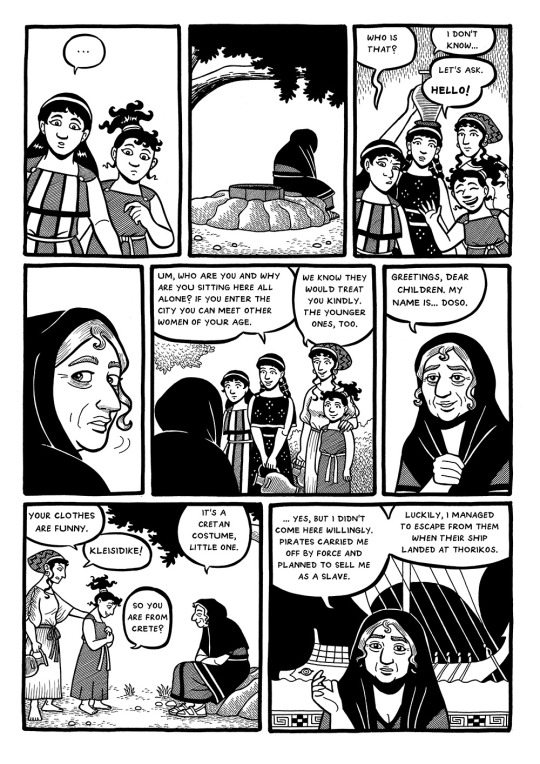#kallithoe
Text

Queen of the Dead part 2, 09
206 notes
·
View notes
Quote
Before investigating thoroughly the forms of statues, men of old set up pillars and honored them as representations of god. At any rate, the author of the Phoronis writes: Kallithoe, the keyholder of the Olympian queen, Argive Hera, who first adorned the high pillar of the Queen round about withwreaths and tassels.
Early Greek Epic Fragments I: Antiquarian and Genealogical Epic, Christos Tsagalis
4 notes
·
View notes
Text

Queen of the Dead part 2, 08
263 notes
·
View notes
Text

Queen of the Dead part 2, 07
250 notes
·
View notes
Text

Queen of the Dead part 2, 06
The daughters of Keleos! In The Homeric Hymn to Demeter it says that they all are in their "maidenly bloom", which I suppose means that they are approaching marriageable age, but I made one of them a bit younger than that.
223 notes
·
View notes
Text
"Apart from depicting some other subjects that are well known from other places, such as the Gigantomachy and the Fall of Troy, the Heraion at Argos shows the birth of Zeus on one of the pediments. At the place where, on the Parthenon, the Athenians decided to show the birth of Athena, the Argives chose, for their Heraion, to represent the birth of Zeus. Pausanias is our only source for information about these two pediments, and he does not really produce a description in full and proper form either of the relation between the various motifs used on the pediment or of the iconography adopted for the birth of Zeus. The fact that this is really the birth of Zeus, however, is not in doubt. More precisely, the crucial point in that story is the moment when Rhea employs her trick to save Zeus from being eaten by Kronos. This is the moment which Praxiteles will depict several decades later in the sanctuary of Hera at Plataia. He there sculpted Rhea carrying the swaddled stone which she will present to her husband. The birth of Hera has no intrinsic meaning, but that of Zeus signifies the stabilisation of the cosmos; Hera, to be sure, had her own part to play in this. In this context, it makes sense to return to the tradition of the city of Hermione, already mentioned, which told of the arrival of Zeus and Hera on the south-east coast of the Argolid, coming from Crete. Stephanus of Byzantium, who preserves this story, gives no details about the nature of the young gods’ stay in Crete, but other sources tell this story against a theogonic background which is a variant of the one found in Hesiod. In this version, Zeus and Hera are twins and the goddess is born first. Since Kronos does not feel threatened by a daughter, he gives Rhea permission to raise the child. By being born first, Hera contributes to saving her brother and grows up with him in Crete. It is impossible to date this tradition, but if the note about Hermione really does preserve traces of it, the choice of the Argives to have the birth of Zeus depicted on the pediment of the temple of Hera makes perfect sense. The birth of the goddess is closely connected with that of her twin, the king with whom she will eventually share the bed and the throne. The theme of the basileia of the spouses is not an artificial adjunct, added to their story by the city of Argos when it undertook building works during the classical period, any more than the story of their marriage is. From the archaic period, at the very latest, the Hera of Argos is the‘queen of Olympus’ and the ‘sovereign’. A fragment of the Phoronis, a lost archaic Argive epic, attests to this when it describes the first priestess of the cult of Hera, Kallithoe, as ‘guardian of the keys of the queen of Olympus’; she was the first one to adorn the statue of the goddess."
- The Hera of Zeus: Intimate Enemy, Ultimate Spouse by Vinciane Pirenne-Delforge and Gabriella Pironti
8 notes
·
View notes